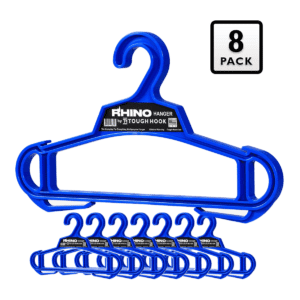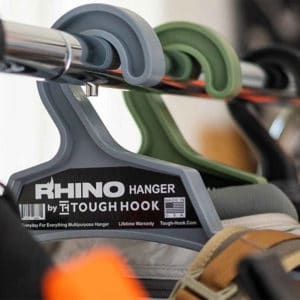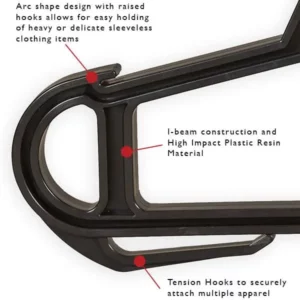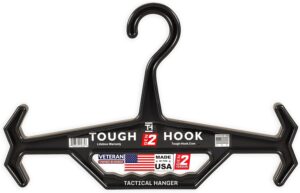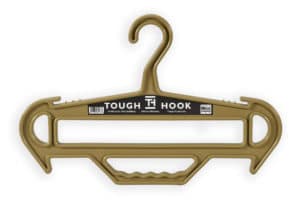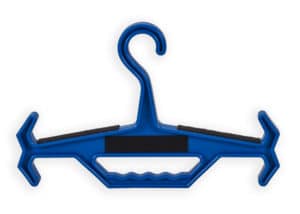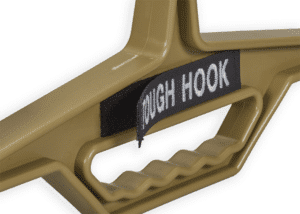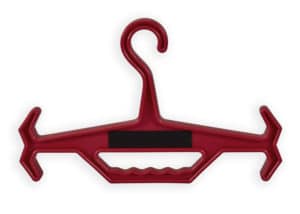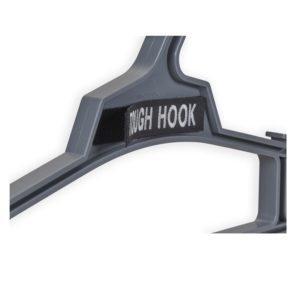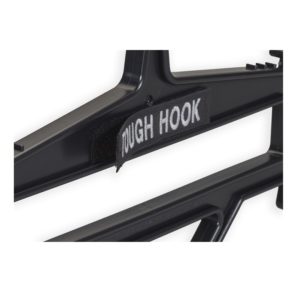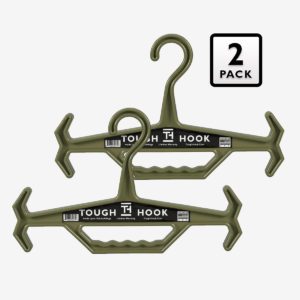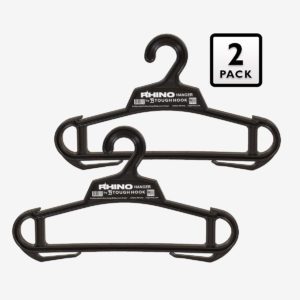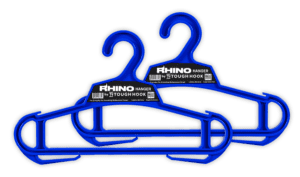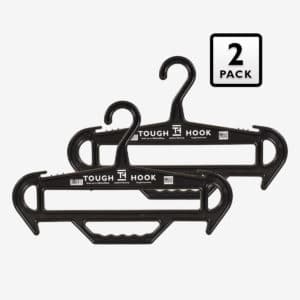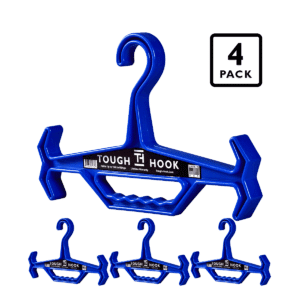Picture this – you’ve just embarked on a seemingly innocuous task, like painting your living room or restoring an old piece of furniture. Hours later, you find yourself scrubbing away persistent paint stains or sawdust from your clothes, skin, and hair. You wish there was a simpler way to keep clean during these projects? Meet disposable coveralls – the unsung heroes of personal protection. From tradesmen to do-it-yourself enthusiasts, disposable coveralls offer benefits and advantages that go well beyond cleanliness. Read on as we dive into how this underrated gear can enhance your safety while ensuring your favorite jeans remain stain-free.
Disposable coveralls offer a range of benefits, including protection from chemical, biological, mechanical, thermal, electromagnetic, and electrical hazards. They also provide excellent protective properties and are designed for short-duration use. Disposable coveralls are cost-effective and easy to store and dispose of. Additionally, they help reduce the risk of contamination as they are guaranteed 100% clean. Finally, disposable coveralls are available in different styles offering specific protection to workers in various jobs.
Understanding Disposable Coveralls
When it comes to personal protective equipment (PPE), disposable coveralls are a popular choice for workers in various industries. They provide full-body protection from different hazards, including chemical, biological, mechanical, thermal, electromagnetic, and electrical. But what exactly are disposable coveralls, and how do they work?
Disposable coveralls are made of lightweight and breathable materials designed for short-term use. They come in different styles, colors, and sizes to fit the needs of different users and applications. Whether you’re painting a wall, handling hazardous chemicals, or working in construction sites, disposable coveralls can protect you from harmful substances while keeping you comfortable and mobile.

An example of where disposable coveralls can be beneficial is among healthcare professionals who work with hazardous substances like blood or vomit. These individuals have to be protected not only from physical harm but also from the potential spread of disease. In this particular industry (medical), it is important that PPEs like disposable coveralls are used throughout the day based on the potential exposure of biohazards that healthcare professionals may experience while on-the-job.
The advantage here is the disposability factor combined with convenience: employees can easily discard their contaminated attire between visits or procedures without having to risk bringing dangerous pathogens home with them. This is why it is essential to wear quality protective equipment like disposable coveralls that are easy to put on and take off.
Now that we understand what disposable coveralls are let’s dive into their key characteristics.
Disposable coveralls are a popular choice for personal protective equipment in various industries as they provide full-body protection from different hazards. They are lightweight, breathable, and designed for short-term use. Disposable coveralls come in different styles and sizes to fit the needs of different users and applications. In the medical industry, disposable coveralls are essential for protecting healthcare professionals from potential exposure to biohazards. Their disposability factor combined with convenience makes them a great choice for employees who can easily discard their contaminated attire between visits or procedures without risking exposure to dangerous pathogens. The key takeaway here is that quality protective equipment like disposable coveralls must be worn to ensure safety at work.
Key Characteristics of Disposable Coveralls
One of the most important aspects of disposable coveralls is their protective properties. A good quality disposable coverall should be capable of providing complete protection for both the wearer and the environment (since they prevent unwanted substances from escaping). A few key characteristics to look out for when assessing a pair of disposable coveralls include:
– Material: Disposable coveralls can be made from different materials, such as polypropylene, Tyvek, and micro-porous film laminate (MFL). Each material has its own advantages and disadvantages in terms of durability, protection, and comfort.
– Design: The design of disposable coveralls can vary depending on the application. Some features to look out for include the closure type (such as zippers or buttons), elastic vs. serged seams, attached hoods / booties, and reinforced areas.
– Size: A comfortable fit is a must with disposable coveralls. They should not be too tight or too loose as both scenarios may cause discomfort or risk exposure to hazards.
As an example, Tyvek disposable coveralls manufactured by DuPont are a popular choice because they provide excellent protection against fine particles, dusts and splashes while being breathable enough to ensure long-term comfort. They feature an elastic waist and cuffs along with a double-zipper front that makes it easy to put on and take off even with gloves. Additionally, Tyvek coveralls also have a tight-fitting hood that provides better protection for the face against hazardous substances.
While many industries are switching over to more sustainable options for protective equipment, quality cannot be compromised when it comes to PPEs like disposable coveralls. There is often a trade-off between effectiveness and environmental sustainability but always choose quality over price when it comes to safety and protection.
Now that we understand the key characteristics of disposable coveralls let’s move on to discussing their protective advantages.
According to a report by Grand View Research, the global disposable protective clothing market size was valued at $2.6 billion USD in 2019 and is predicted to grow at a compound annual growth rate (CAGR) of 16.5% from 2020 to 2027.
A study published in the Journal of Occupational and Environmental Hygiene found that disposable coveralls have an average particle penetration under 4%. This means they provide high barrier protection against airborne hazards and splash protection from chemicals.
The National Institute for Occupational Safety and Health (NIOSH) reveals an extensive use of disposable coveralls in different sectors- about 20% in construction, 18% in manufacturing, and 13% in painting services, reflecting their versatile application depending on the level of hazard exposure.
Protective Advantages of Disposable Coveralls
When it comes to protective gear, disposable coveralls are an essential tool with many advantages. First and foremost, they provide full-body protection that reduces the risk of contamination or exposure to harmful pathogens, chemicals, or substances. Moreover, they offer a more reliable barrier than traditional clothing, which can often be damaged or ripped during work.
Additionally, disposable coveralls are easy to wear and remove, without requiring any washing, drying, or maintenance. This is particularly beneficial for industries where workers may be exposed to hazardous materials repeatedly during their workday. Disposable coveralls save time and cost by eliminating the need for extra clothing changes or laundering.
Another significant advantage of disposable coveralls is their versatility in different situations, environments, and applications. From construction sites to laboratories or hospitals, from painting jobs to handling asbestos or pharmaceuticals, disposable coveralls come in various styles and materials that suit different needs and requirements.
For instance, workers handling asbestos must wear protective gear that meets specific safety standards to reduce exposure risks. Asbestos fibers can cause lung cancer and other respiratory illnesses if inhaled continuously. Wearing disposable coveralls that meet the applicable standard can help protect workers from inhaling these harmful particles.
Furthermore, disposable coveralls are made of lightweight yet durable materials that resist tearing and abrasion effectively. Tyvek nonwoven fabric from DuPont is a popular material choice for many brands due to its high strength-to-weight ratio, breathability, and liquid resistance properties.
However, some experts argue that disposable coveralls may not provide enough protection against certain hazards such as flames or intense heat exposure. In such cases, specialized clothing such as fire retardant garments may be required instead.
To compare this situation with everyday life experiences: wearing sunglasses will reduce UV exposure but does not necessarily protect against bright flashes of light. Similarly, disposable coveralls provide general protection but may not be sufficient in specific cases.
Therefore, it is crucial for workers to select the right disposable coveralls that meet the safety standards and requirements for their job tasks. The next section will explore the protection mechanisms of disposable coveralls in more detail.
Protection Mechanisms
Disposable coveralls offer several protective mechanisms that safeguard workers from a wide range of hazards. Firstly, their design, which covers the whole body from head to toe, reduces exposure risks from skin contact with harmful substances or pathogens.
Secondly, disposable coveralls act as a barrier against penetration by liquids or particles. Different materials and construction methods provide various degrees of protection and impermeability depending on the hazard nature and type.
Thirdly, some models come with additional features such as hoods, boots, cuffs, or waistbands that enhance their ability to seal off any potential entry points for hazardous materials. These add-ons are often elastic or adjustable to ensure a snug yet comfortable fit that allows for easy movement and mobility.
Another critical protection mechanism is the fabric’s ability to resist tearing, puncturing, or abrasion during work wear. Disposable coveralls made of durable materials such as Tyvek nonwoven fabric can withstand harsh environments and prevent hazardous substances from entering through damaged areas.
Lastly, disposable coveralls can help reduce cross-contamination risks by preventing any released particles or substances from entering other work areas or regions outside the workplace.
For instance, healthcare workers use different types of disposable coveralls depending on whether they are working in patient care situations where bloodborne pathogens may be present. This not only protects them from contamination but also prevents the spread of infectious diseases to patients or other staff members.
In addition, independent studies have shown that wearing proper protective gear such as disposable coveralls can significantly reduce work-related injuries and illnesses. According to a report by the National Institute for Occupational Safety and Health (NIOSH), proper protective gear may have prevented up to 20% of occupational injuries and illnesses in one study.
However, some critics argue that disposable coveralls may not be as effective as reusable or washable options, especially in high-risk environments. They claim that disposable coveralls can sometimes be less durable or require more frequent changes, resulting in higher waste production and potential exposure to discarded contaminated materials.
To compare this situation with everyday life experiences: using plastic cutlery may be more convenient than using metal cutlery, but it generates more waste and may not last as long. Similarly, disposable coveralls provide quick protection but may not be as cost-effective or environmentally friendly in the long run compared to reusable alternatives.
Therefore, it is crucial for workers to weigh the advantages and disadvantages of different types of disposable coveralls carefully. The next section will discuss the variety of disposable coveralls available in the market and compare different materials and brands.
Variety in Disposable Coveralls
When it comes to disposable coveralls, there are many different varieties available in the market. They come in a range of sizes, materials, and styles to fit different types of applications. The variety in disposable coveralls ensures that there is one for every job, and workers can choose according to their needs.

For instance, some disposable coveralls are specifically designed for protection against hazardous chemical or biological substances. These coveralls have special features like hoods, boots, or elasticated cuffs, which provide maximum protection to the wearer. On the other hand, coveralls designed for general-purpose use do not have such specialized features but still offer a good level of comfort and protection.
Another aspect of variety is customizability. Many companies offer customization options for disposable coveralls, enabling businesses to add their logos or brand names onto them. This feature not only enhances safety but also enables companies to advertise themselves while their employees work.
Additionally, the variety of colors offered can be beneficial in certain job settings. In high-traffic environments where visibility is crucial for safety purposes, bright orange or yellow disposable coveralls can make employees easily identifiable from afar. Conversely, if anonymity or discretion is preferred, white or gray disposable coveralls may be more appropriate.
Comparing Different Materials and Brands
There are many leading brands that offer disposable coveralls made from different materials. Each brand has its unique features that stand out from others, making some more preferred than others depending on industry applications.
Leading brands like DuPont offer protective coveralls made from Tyvek nonwoven fabric. This ups the reliability factor in stopping substances from getting through due to microscopic fibers’ ability to stop contaminants effectively. Tyvek’s popularity stems from its reliability for preserving worker productivity through superior protective coverage.
Other brands have emerged in recent times like Ansell’s Microchem 4000 with anti-static properties making them ideal for employees working around sensitive electronics, whereas some such as 3M Protective Coverall 4565 use special tape technology to ensure proper sealing and protection against leaks.
Disposable coveralls are an investment, and prudent choices prove cost-effective in reducing economic risks associated with work-related accidents involving staff covering injuries or compensation costs due to avoidable hazards while wearing subpar attire.
2 Pack RHINO Heavy Duty Clothes Hanger Bundle
Original price was: $25.95.$23.95Current price is: $23.95.Guidelines for Wearing and Disposing of Coveralls
When it comes to wearing and disposing of disposable coveralls, there are several key guidelines you should follow to ensure maximum protection and convenience. Here are some of the most important considerations:
First, it’s essential to choose a coverall that fits properly and is appropriate for your specific job. Ensure that the size you select fits securely but still allows for freedom of movement. Additionally, consider the job-specific hazards you’ll face and make sure the material of your coverall is appropriate.
Once you’ve selected the correct coverall, putting it on correctly is critical. Before donning the coverall, remove any jewelry or loose clothing. Once you’re wearing the coverall, check that the cuffs around your wrists and ankles fit snugly and that any zippers or closures are securely fastened.
It’s also crucial to avoid contaminating either yourself or others when taking off your coverall. Always be mindful of which parts of your suit have come into contact with hazardous materials. When removing your coverall, carefully peel it off inside out to keep any contaminants from contacting your skin or clothes.
Think of taking off a disposable coverall like peeling a banana – start at one end and work your way down to keep everything contained. Additionally, always dispose of used coveralls properly in designated waste containers.
By following these guidelines for wearing and disposing of disposable coveralls, you can minimize the risk of contamination while maximizing both safety and convenience.
Best Practices for Safety and Convenience
While following guidelines is essential to safely using disposable coveralls, several best practices can help make their use even more convenient and effective. Here are some additional tips to keep in mind:
One key recommendation is to always carry an extra set of gloves in addition to wearing gloves as part of your coveralls. This way, if your gloves begin to tear or become contaminated, you can replace them quickly without having to remove your entire suit.
Additionally, consider using disposable boot covers over your shoes to help keep contaminants inside the suit. Similarly, wearing a hat or hairnet can prevent loose hairs from falling into hazardous materials and contaminating them.
If you’re struggling with finding the right size or fit for a disposable coverall, consider purchasing adjustable options or suits that come in multiple sizes. Additionally, some manufacturers offer reusable coveralls that can be laundered rather than thrown away after use. While these may initially seem like a more expensive option, they can pay off over time if used frequently.
Think of disposable coveralls like training wheels on a bike – while they may not be necessary forever, they provide an added level of safety and ease while gaining experience on the job.
By incorporating these best practices into your use of disposable coveralls, you can get the most out of their protective properties while also increasing convenience and efficiency on the job.


